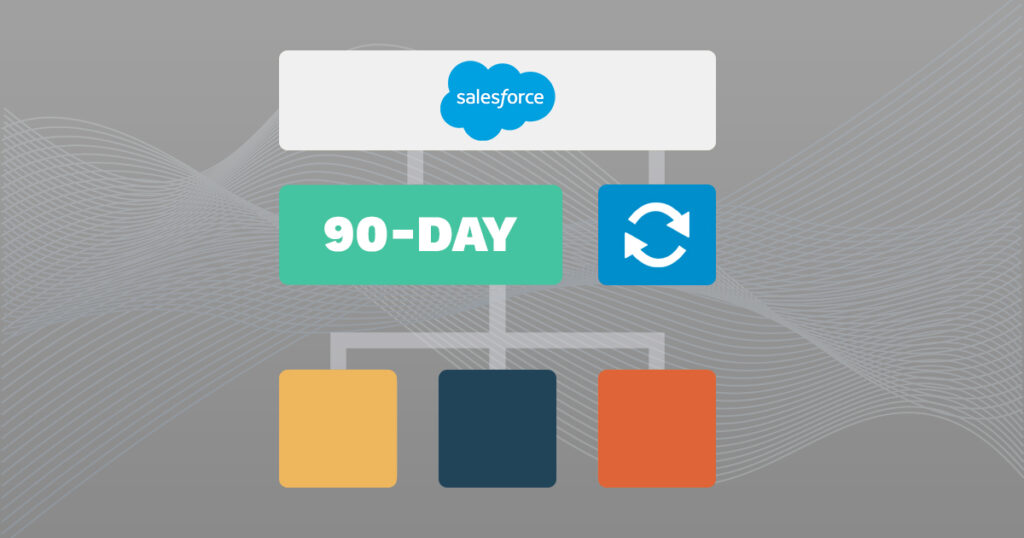From Data Chaos to a Predictable Revenue Engine: 5 Essential Salesforce Dashboards
How executive marketing leaders use Salesforce to govern performance, prove strategic value, and align their teams with the C-Suite.
In today’s competitive B2B landscape, marketing leaders are under immense pressure to operate as a predictable and scalable revenue engine. The challenge is no longer just about justifying budgets; it’s about demonstrating strategic command over the entire lead-to-revenue lifecycle.
Without a robust, data-driven framework, marketing’s contribution remains ambiguous, leading to misaligned investments and missed revenue targets. Poor attribution isn’t just a reporting issue—it’s a critical business risk.
This is where Salesforce reporting transcends simple tracking to become a system of executive governance. For senior leaders, these dashboards are not just reports; they are command centers. Here are the five essential dashboards that VPs of Marketing and RevOps use to translate marketing activities into pipeline power.
The Solution: The multi-touch attribution dashboard provides a defensible model for strategic investment across a diverse marketing mix. It moves beyond last-touch vanity metrics to reveal how different initiatives influence deal progression at every stage of the funnel. This dashboard provides the C-suite with a complete narrative of marketing’s role in generating and accelerating revenue. For example, you may discover that while your paid search campaigns generate the most initial leads, your C-level content series is the single biggest factor in accelerating deals from Stage 2 to Stage 3. Without a model that assigns influence credit to that critical mid-funnel touchpoint, you might mistakenly defund your most valuable asset.
The Solution: The Campaign ROI dashboard answers this critical question in direct financial terms. It connects marketing spend to revenue, transforming marketing from a cost center into a strategic, performance-measured investment. This dashboard visualizes your entire go-to-market spend against an influenced and sourced pipeline. Using a combination of Campaign Cost fields and customizable Salesforce Campaign Influence models, this dashboard provides an uncompromising view of performance. It allows leaders to:
- Measure true ROI for every initiative, from large-scale ABM campaigns to major industry events.
- Compare financial performance across channels and tactics to optimize future budget allocation.
Align marketing spend directly with the campaigns and strategies that are proven to generate revenue.
The Solution: This dashboard visualizes the entire journey from initial lead capture to closed-won revenue. It provides the critical data needed to manage the handoff between marketing and sales, holding both teams accountable for shared success. By precisely measuring conversion rates between key stages—such as MQL to SAL (Sales Accepted Lead) and SAL to SQL (Sales Qualified Lead)—you can pinpoint process friction. This dashboard helps you answer critical questions:
- Are our marketing campaigns generating high-quality leads that the sales team accepts?
- Where in our process do qualified leads stall or drop out?
- How effective are our lead scoring models at predicting which leads will convert?
With visual funnel charts and trend lines, this dashboard makes it simple for executive teams to monitor funnel health and make data-driven decisions to improve lead quality and process efficiency.
The Solution: The pipeline velocity dashboard measures the speed and efficiency of the sales cycle for marketing-generated opportunities. It demonstrates marketing’s impact not just on pipeline creation, but on pipeline acceleration. This dashboard tracks core metrics like average sales cycle length, stage duration, and win rates for marketing-sourced leads versus other sources. If marketing-generated opportunities close 20% faster and have a 15% higher win rate, it provides definitive proof of marketing’s impact on sales efficiency. This data enables you to:
- Double down on channels that produce high-velocity, high-conversion leads.
- Collaborate with sales to diagnose and resolve stalls in the sales process.
- Provide the CFO and CEO with more accurate revenue forecasts based on historical pipeline speed.
The Solution: This marketing executive dashboard is the single source of truth for the CMO, CRO, and CEO. It rolls up the most critical KPIs from the other four dashboards into one executive summary. It provides an at-a-glance, real-time view of the entire revenue engine. Key components typically include:
- Total Pipeline Influenced by Marketing (Quarter-to-Date)
- Marketing Sourced vs. Influenced Revenue
- Overall Campaign ROI (by major investment category)
- Average Pipeline Velocity
- MQL-to-Close Conversion Rate
This high-level dashboard ensures strategic alignment across the entire leadership team, framing every marketing conversation around pipeline and revenue.
At CRM Forge, we architect Salesforce instances that provide this level of executive clarity. We partner with enterprise leaders to build the reporting frameworks that align marketing efforts with strategic business goals.
If you are ready to move beyond basic tracking and build a true revenue command center, schedule a complimentary Strategic Dashboard Assessment with one of our lead architects today.









